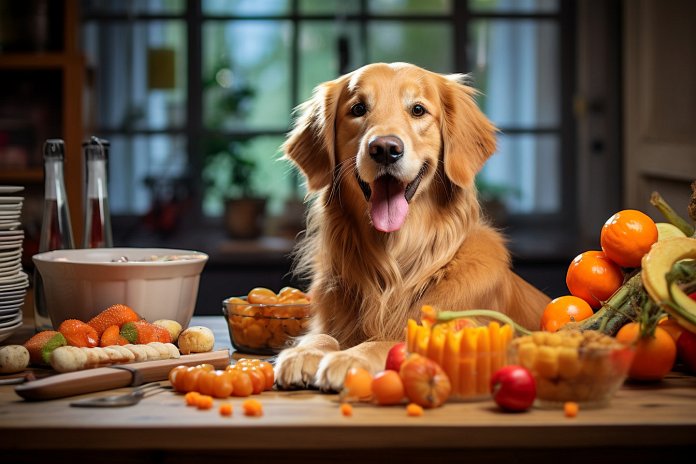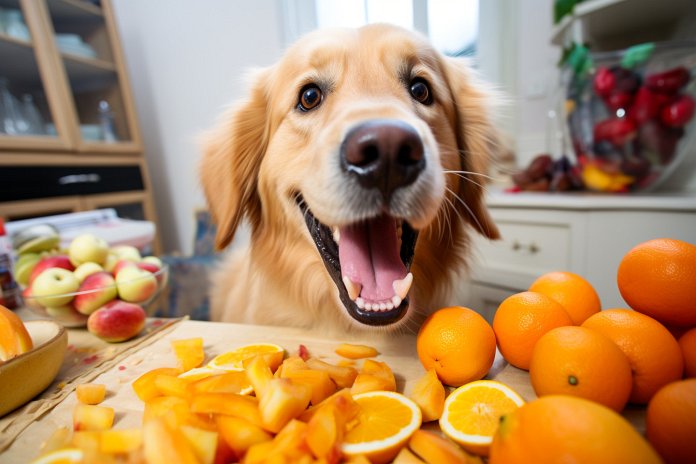
People love crunchy snacks like chips, fried chicken, cookies, crackers, and nuts. Our senses of taste, smell, and hearing enhance the enjoyable experience of crunching on these treats. When it comes to the food we give our dogs, there are plenty of crunchy options. Many dog foods, cookies, and bones are dry and crunchy. But is it just the crunch that dogs crave, or are there other factors at play?
Signs Your Dog Likes Crunch
As the owner, it’s important to be attuned to your dog’s needs and preferences. Since dogs can’t describe their taste experience, you need to observe their behavior. If your dog has a preference for crunchy food, you’ll notice a few signs. Your dog may stare at your food when you’re eating, but then look away when you make eye contact. This submissive behavior is appropriate when you’re eating. When begging, your dog’s ears may move forward and then back, signaling anticipation and confusion. Some dogs may do a little dance or nudge and bark at you for the treat. If the treat is delayed, your dog may stare at it and whimper.
Body Language
Watch for the following body language cues if your dog is interested in your food:
– Staring
– Whimpering
– Averting eyes
– Ears back
– Ears up
Other Signs
Additional signs that your dog likes crunchy food include:
– Spending extra time smelling it
– Seeking out specific food
– Gnawing on the food first
The History of Dogs’ Taste Senses
Like humans, dogs can taste sweet, bitter, sour, and salt. However, humans have a more refined sense of taste with 9000 taste receptors, compared to dogs’ 1700. Dogs evolved to prefer water and substances that support their nutrition and health, so they do not have a preference for salty items. Dogs also have special water receptors on the front of their tongues, which contributes to their taste capacity. Their incredible sense of smell also plays a role in their taste experience.
The Science of Crunchy Food
Dogs are omnivores and eat both meat and fruits in the wild. Dog food researchers have studied the pros and cons of wet versus dry or crunchy dog food in terms of taste, dental health, and overall health. Smell and freshness are important factors for dogs, as they prefer foods that smell good and are fresh. While there is no taste difference between wet and dry food, preferences may be influenced by early feeding experiences, range of foods offered, and the dog’s health. Wet food may be preferred for dogs with health issues, digestive problems, or poor dental health. Dry food offers convenience for owners and requires attention to protein levels and water intake. Freshness is key for the best taste experience with crunchy foods.
Training Your Dog to be a Good Eater
It is our responsibility as owners to teach our dogs good eating habits and manners. Start when your dog is a puppy by feeding them three times a day until they are four months old, then switch to twice a day. Place the food in the bowl for 20 minutes and take it away if they haven’t finished. This teaches them to eat when the food is offered. If you need to change their diet, do so gradually by mixing the new food with the old. Some trainers suggest eating before your dog to demonstrate leadership. Teach your dog to go lay down on a mat or rug while you eat and avoid sharing table food, as it reinforces bad behaviors and may be unhealthy for your dog. Treat your dog, mealtime, and food with respect and responsibility.
“Crunch, the universal language of canine delight.”

Tips & Things to Know
1️⃣ Pay attention to your dog’s body language: Look for signs such as staring, whimpering, aversion of eyes, and ears back or up to determine if your dog likes crunchy food or treats. These behaviors can indicate anticipation and desire for the desired object.
2️⃣ Consider your dog’s taste preferences: Dogs have different taste receptors compared to humans, with a preference for meat and a lower preference for salty items. They also have special receptors for water, which affects their ability to taste and enjoy food. Keep in mind your dog’s taste preferences when selecting their diet.
3️⃣ Establish good eating habits through training: It is important to teach your dog good eating manners and behaviors from a young age. Feed them at regular times, gradually introduce new foods, and avoid sharing table scraps to prevent picky eating behaviors and obesity. By training your dog to have good eating habits, you ensure their overall health and happiness.
Frequently Asked Questions, Answered ✅
1. What are some signs that a dog likes crunchy food?
– Staring at the food
– Whimpering
– Averting eyes
– Ears back
– Ears up
2. How do dogs’ taste senses differ from humans?
– Dogs have 1700 taste receptors on their tongues, while humans have 9000.
– Dogs do not prefer salty items, as their diet in the wild is primarily meat.
– Dogs have special water receptors on their tongues.
3. What factors are important to consider when choosing dog food?
– Smell: Dogs prefer foods that smell good to them.
– Freshness: Dogs prefer fresh food over old food.
– Texture: Preferences may be based on early feeding experiences and the dog’s health.
– Protein levels: Owners need to be mindful of protein levels in dry food and ensure the dog has sufficient water supplies.
4. How can you train your dog to have good eating habits?
– Feed young puppies 3 times a day until they are 4 months old, then switch to twice a day.
– Leave the food out for 20 minutes and then take it away.
– Gradually introduce new food if a diet change is necessary.
– Teach your dog to go lay down on a mat or rug while you eat.
5. Should you share table food with your dog?
– No, sharing table food reinforces nuisance behaviors, bad manners, and can introduce foods that are not good for your dog.